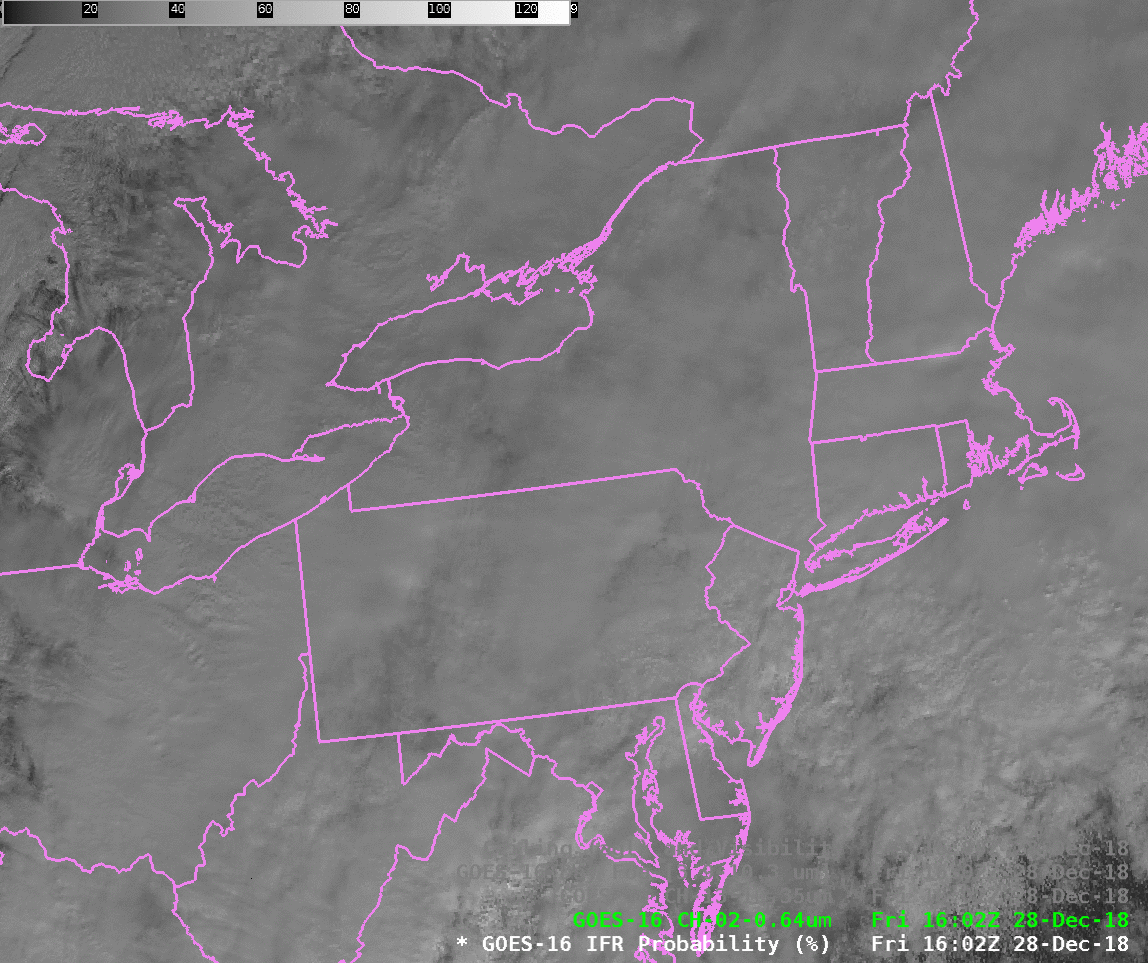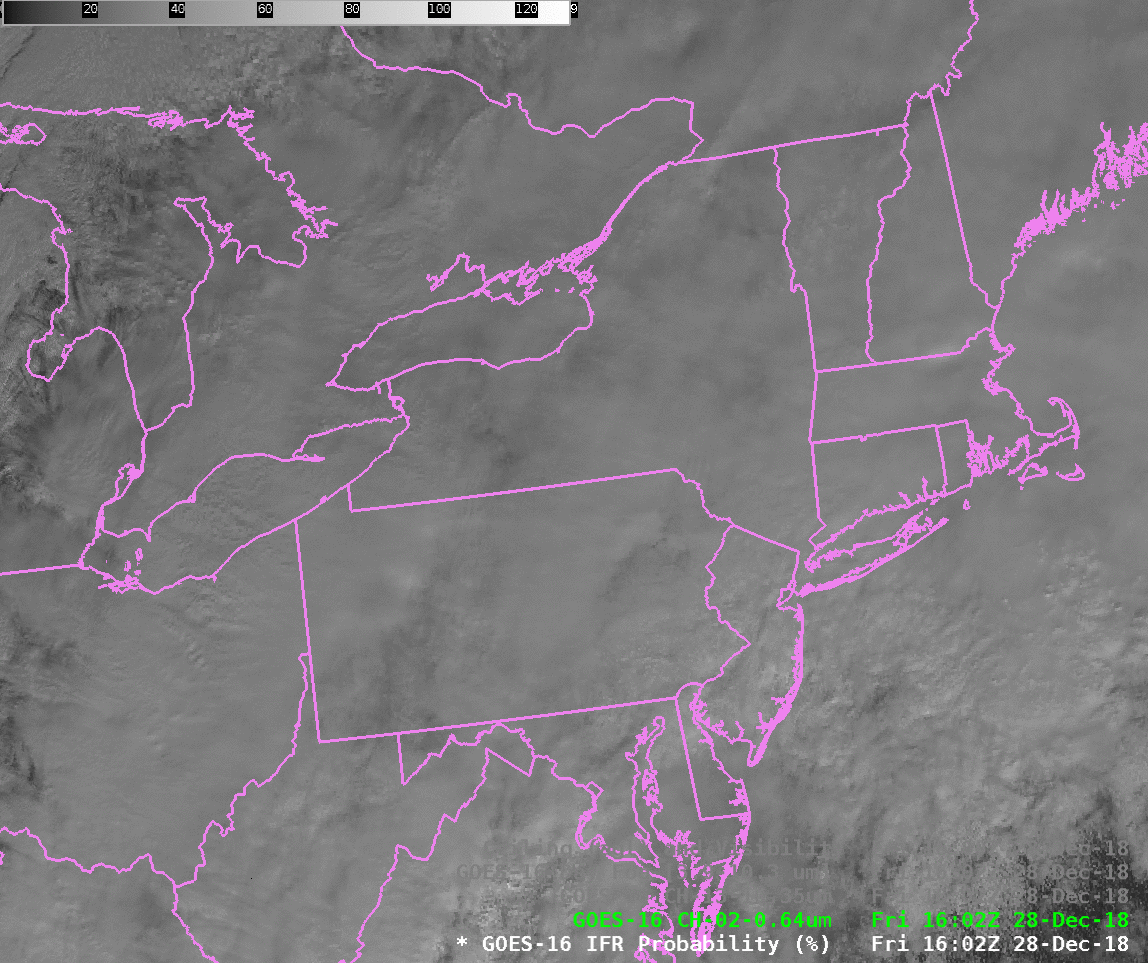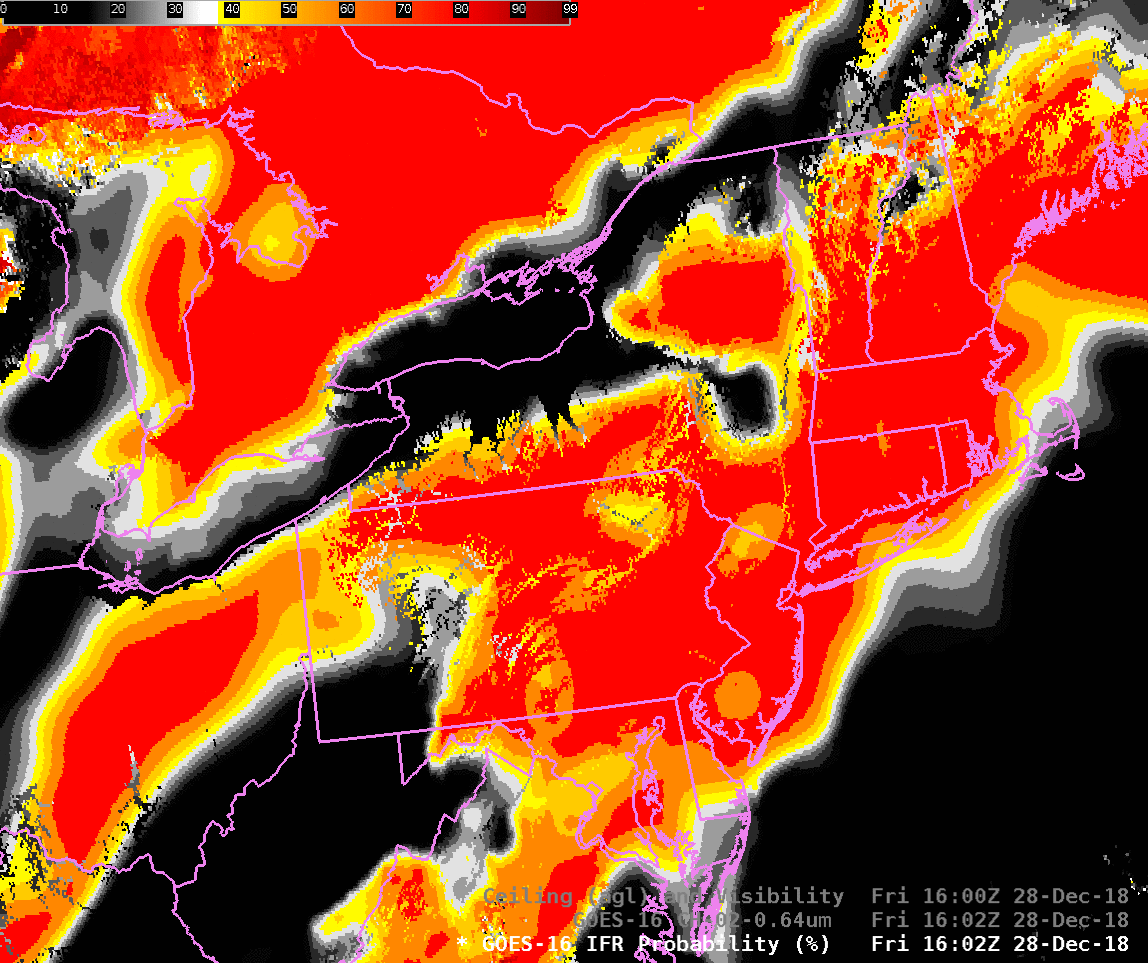
GOES-16 ABI Band 02 (0.64 µm), Band 13 (10.3 µm), Day Fog Brightness Temperature (3.9 µm – 10.3 µm), Day Snow Fog RGB and Band 5 (1.61 µm) at 1602 UTC on 28 December 2018 (Click to enlarge)
The animation above cycles through the GOES-16 Visible Imagery (Band 2, 0.64 µm), Band 13 (Clean Window Infrared, 10.3 µm), the Day Fog Brightness Temperature Difference (3.9 µm – 10.3 µm), the Day Snow Fog Red Green Blue (RGB) Composite and the Snow/Ice near-Infrared channel (Band 5, 1.61 µm) that is the green component of the Day Snow Fog RGB. (That’s very apparent in this toggle between the Day Snow Fog RGB and the 1.61 µm) Do any of these products give you a good idea of where IFR conditions (Low ceilings and reduced visibilities) are occurring?
Consider the toggle of visible imagery below, with and without surface observations of ceilings and visibility. It is a difficult prospect to relate the top-of-cloud reflectance (which is what the visible imagery gives you!) to the ceilings beneath the cloud.

GOES-16 ABI Band 02 (0.64 µm) with an without surface observations of ceilings and visibility at 1602 UTC on 28 December 2018 (Click to enlarge)
GOES-16 IFR Probability fields blend satellite observations of cloud with Rapid Refresh model data that predicts saturation near the surface. That model data, incorporated into a statistical prediction of IFR conditions, allows the field to outline the regions where low ceilings and reduced visibilities occur, as shown in the toggle below with and without observations. (Click here to see the Visible and IFR Probability fields toggled). The inclusion of near-surface saturation values extracted from the Rapid Refresh model allows the IFR Probability field to discriminate between low ceilings/fog — as over central Pennsylvania, Massachusetts and central Ohio (among other places) — and mid-level stratus — as over southwestern Pennsyvlania and surrounding Lakes Erie and Ontario (among other places).

